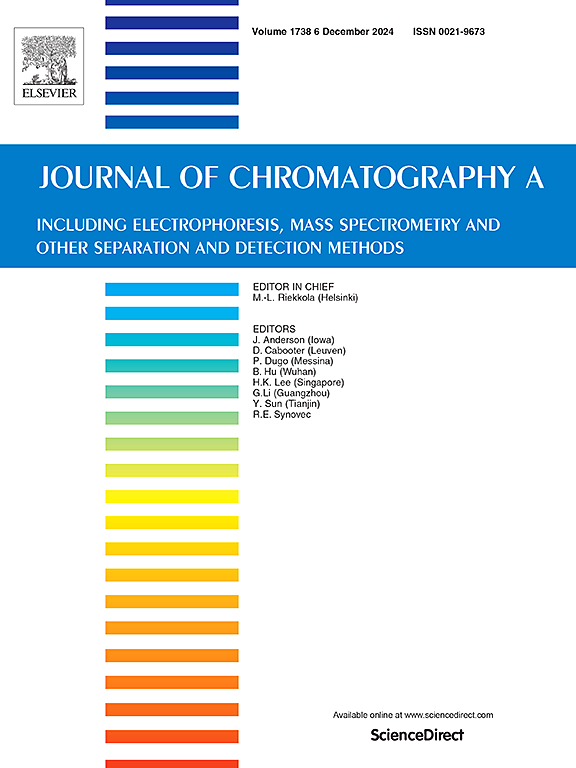A dual-polarity ion mobility spectrometer for capturing hyper-fast chromatographic peaks
IF 3.8
2区 化学
Q1 BIOCHEMICAL RESEARCH METHODS
引用次数: 0
Abstract
For higher analytical performance, ion mobility spectrometers (IMS), especially when analyzing complex mixtures, are often coupled with gas chromatographs (GC). However, analysis time remains a critical parameter in gas chromatography. Therefore, a hyper-fast GC is a promising approach for GC-IMS to combine highest sensitivity of IMS with increased peak capacity while allowing for rapid analysis within the double-digit second range. For simultaneously recording of both ion polarities, a new dual drift tube IMS in axial configuration has been developed that is particularly designed for resolving even hyper-fast GC peaks. Key is a directed sample gas flow through the ionization region giving a small effective detector volume. To avoid condensation of the sample gas, the IMS is isothermally heated to 120 °C. A drift tube length of only LD = 41 mm with a drift voltage of UD = 2.7 kV leads to an IMS repetition rate of 100 Hz and high resolving power of Rp = 60, even for ions with low reduced ion mobility down to 0.43 cm2V-1s-1. This setup can resolve very short GC peaks with full width at half maximum of only 140 ms. For demonstration, two different hop varieties and a mixture of explosives were analyzed within a short time of just 20 s.
用于捕获超高速色谱峰的双极性离子迁移谱仪
为了获得更高的分析性能,离子迁移率光谱仪(IMS),特别是在分析复杂混合物时,通常与气相色谱仪(GC)耦合使用。然而,分析时间仍然是气相色谱的一个关键参数。因此,超快速气相色谱是一种很有前途的GC-IMS方法,它将IMS的最高灵敏度与增加的峰值容量结合起来,同时允许在两位数的秒范围内进行快速分析。为了同时记录两种离子极性,开发了一种新的轴向双漂移管IMS,专门用于解析超高速GC峰。关键是一个定向的样品气体流过电离区,给一个小的有效探测器体积。为了避免样品气体的冷凝,IMS被等温加热到120℃。漂移管长度仅为LD = 41 mm,漂移电压为UD = 2.7 kV,即使对于低还原离子迁移率(0.43 cm2V-1s-1)的离子,也能获得100 Hz的IMS重复率和Rp = 60的高分辨率。这种设置可以解析非常短的GC峰,全宽度的一半最大时间只有140 ms。为了证明这一点,我们在短短20秒内分析了两种不同的啤酒花品种和混合炸药。
本文章由计算机程序翻译,如有差异,请以英文原文为准。
求助全文
约1分钟内获得全文
求助全文
来源期刊

Journal of Chromatography A
化学-分析化学
CiteScore
7.90
自引率
14.60%
发文量
742
审稿时长
45 days
期刊介绍:
The Journal of Chromatography A provides a forum for the publication of original research and critical reviews on all aspects of fundamental and applied separation science. The scope of the journal includes chromatography and related techniques, electromigration techniques (e.g. electrophoresis, electrochromatography), hyphenated and other multi-dimensional techniques, sample preparation, and detection methods such as mass spectrometry. Contributions consist mainly of research papers dealing with the theory of separation methods, instrumental developments and analytical and preparative applications of general interest.
 求助内容:
求助内容: 应助结果提醒方式:
应助结果提醒方式:


